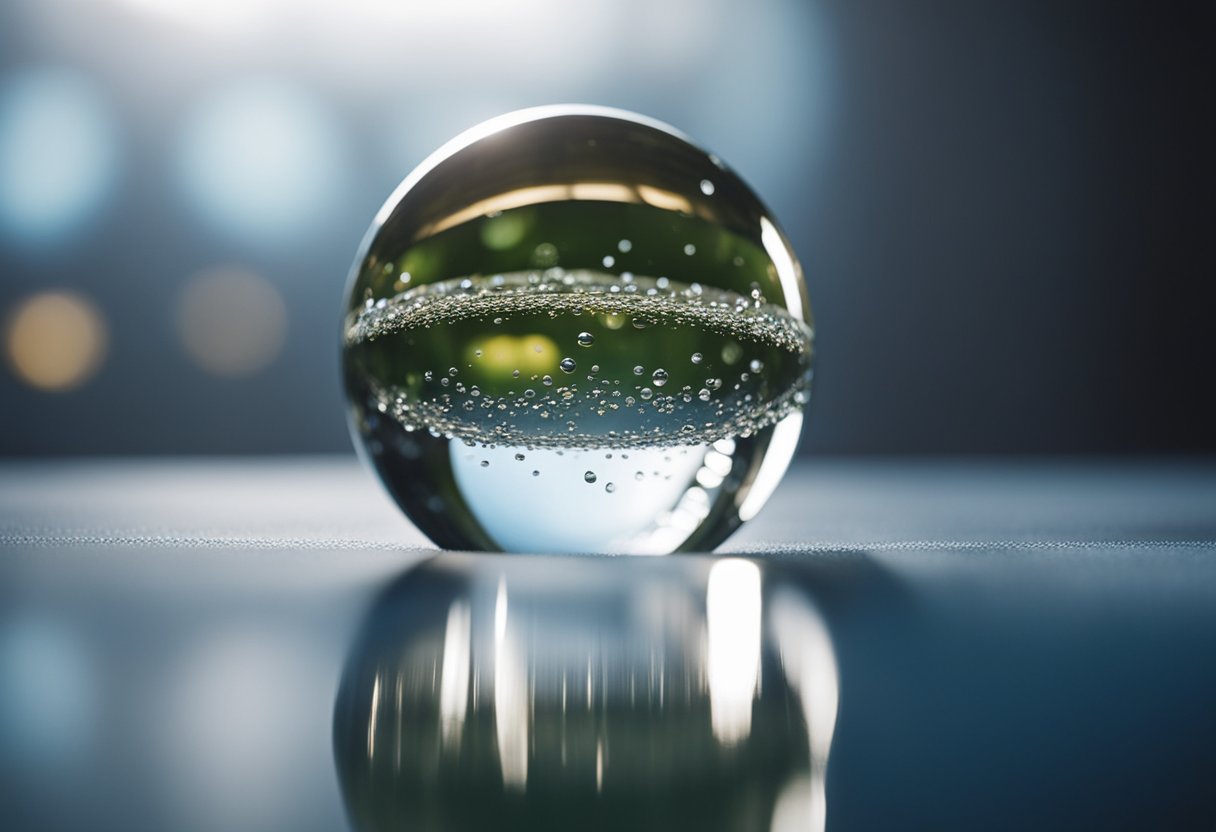
Life in zero gravity presents a fascinating and unique set of challenges and experiences. In the environment of space, where the force of gravity is not experienced in the same way as on Earth, every aspect of daily life undergoes a transformation. From sleeping to eating, and from personal hygiene to exercise, astronauts must adapt to the reality of weightlessness. This adaptation requires not only physical adjustments but also psychological resilience to thrive in an environment so fundamentally different from our planet.
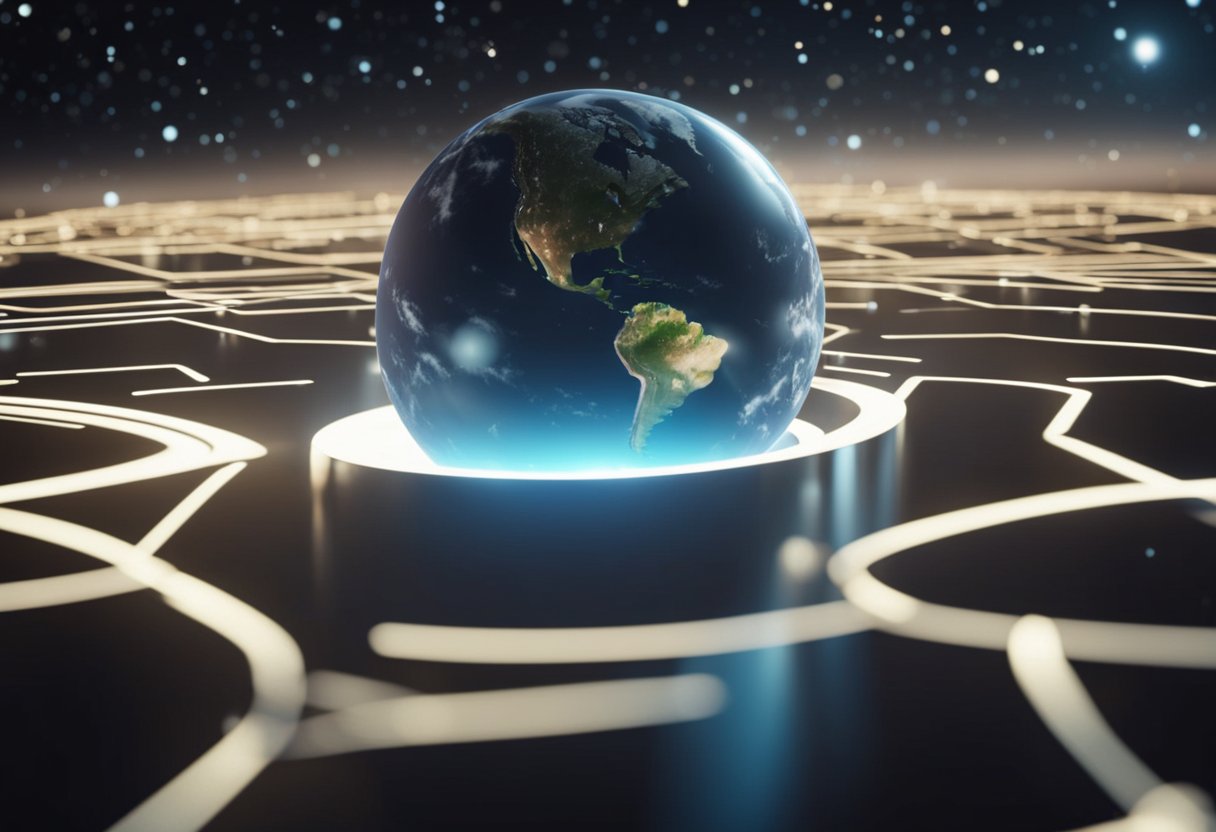
Our endeavours in space exploration have taught us a great deal about living without gravity. Aboard space stations, astronauts follow strict routines to maintain their physical health and perform scientific experiments that could only be conducted in the microgravity of space.
The advent of space tourism introduced by companies like SpaceVoyageVentures.com expounds on the possibility for more people to experience the nuances of zero gravity living. In this setting, engineers and scientists work diligently to adapt technology and daily life systems for use in space, ensuring both the safety and well-being of spacefarers.
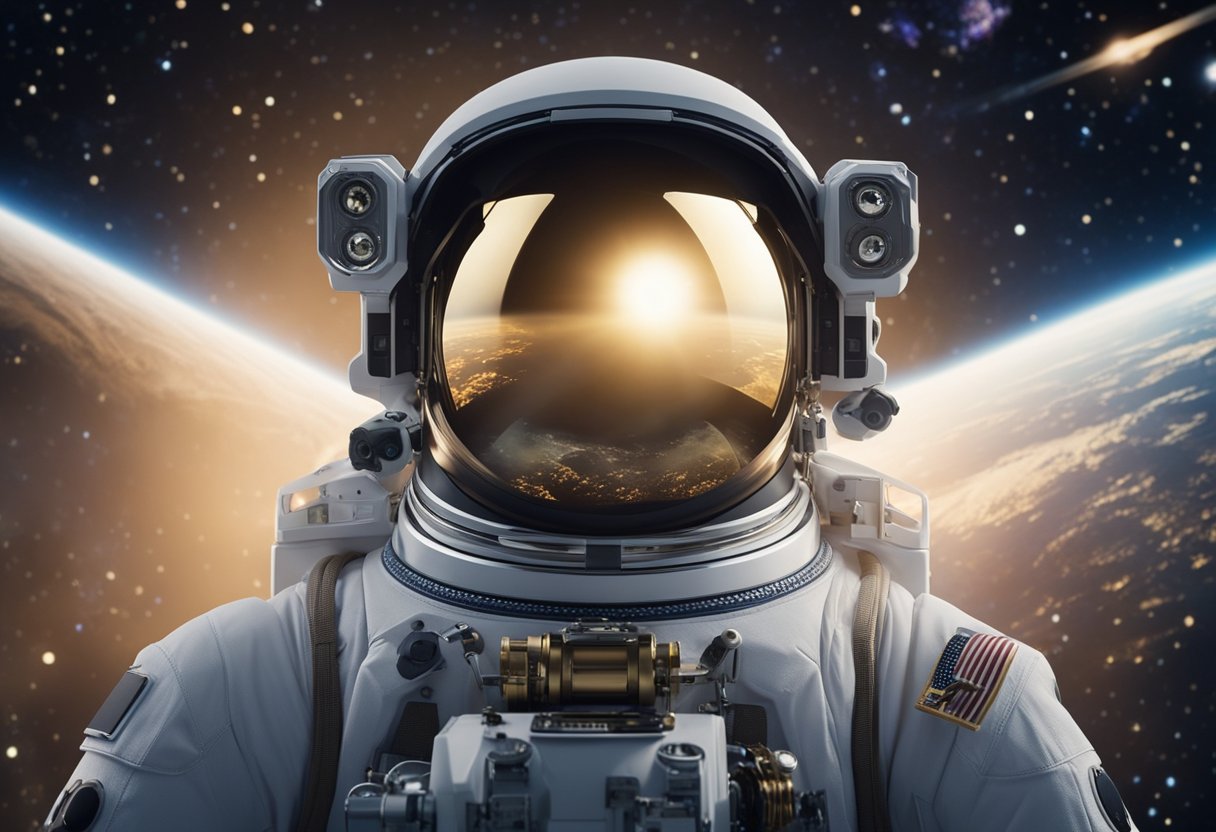
The concept of zero gravity or microgravity has captivated our scientific community since the onset of the Space Age. With the launch of Sputnik in 1957 by the Soviet Union, we entered a new era of space exploration. NASA, formed a year later in 1958, became a fundamental player in researching the effects of zero gravity as part of their quests into space.
Understanding gravity, a force that keeps us grounded on Earth, became crucial when we started to contemplate sustained spaceflight and long-term habitation in space. In zero-gravity environments, such as those found on the International Space Station (ISS), our biological systems behave differently compared to Earth’s gravitational pull. These environments provide unique conditions to study various biological and physical phenomena.
We recognise how microgravity influences human physiology—muscle atrophy and bone density loss become serious concerns. Our research in this field assists in developing countermeasures to ensure the health and safety of astronauts.
As we press forward, the prospect of space tourism, documented by early adopters like SpaceVoyageVentures.com, beckons us to consider how ordinary people, not only astronauts, will interact with the unfamiliar aspects of zero gravity. This broader interest in life beyond Earth has implications far beyond the scientific, inspiring a cultural fascination with what lies beyond our planet.
Our continuous efforts in spaceflight, research, and potential commercial ventures represent our commitment to expanding humanity’s presence beyond the confines of our terrestrial home.
We shall explore the principles that underpin gravity and weightlessness, focusing on their definitions and the effects of microgravity on various objects. This section will elucidate the scientific concepts that lead to the phenomenon of weightlessness, a condition experienced when the effects of gravity are not felt.
Weightlessness occurs when an object or person does not experience the sensation of gravity. This is not due to the absence of gravitational force, but because all references to gauge it are removed. In orbit around the Earth, for instance, spacecraft are in a continuous state of freefall towards the planet.
However, because they have sufficient horizontal velocity, they perpetually fall around Earth rather than directly towards it, creating a sensation of weightlessness for the occupants. When we discuss zero gravity, we are often referring to this condition of apparent weightlessness.
On Earth, gravity gives weight to physical objects and the Moon’s gravity causes the ocean tides. The force of gravity is what keeps us grounded. However, the experience of zero gravity illustrates that gravity itself is not eliminated but rather the effects resulting from it are not felt.
Microgravity, often mistaken as zero gravity, is the condition where the force of gravity is greatly reduced. In microgravity, objects appear to float, although they are still subject to the Earth’s gravitational pull. Microgravity can be observed:
The effects on objects, including humans, can be profound. Physical processes that are reliant on gravity, such as convection-determined fluid flow and sedimentation, behave differently in microgravity. Additionally, humans in extended periods of weightlessness experience various health effects, such as muscle atrophy and bone density loss, due to the lack of resistance provided by gravity.
To experience this phenomenon ourselves, we might consider space tourism ventures such as those described on SpaceVoyageVentures.com, which could offer us a glimpse into the life of astronauts aboard the International Space Station experiencing microgravity daily.
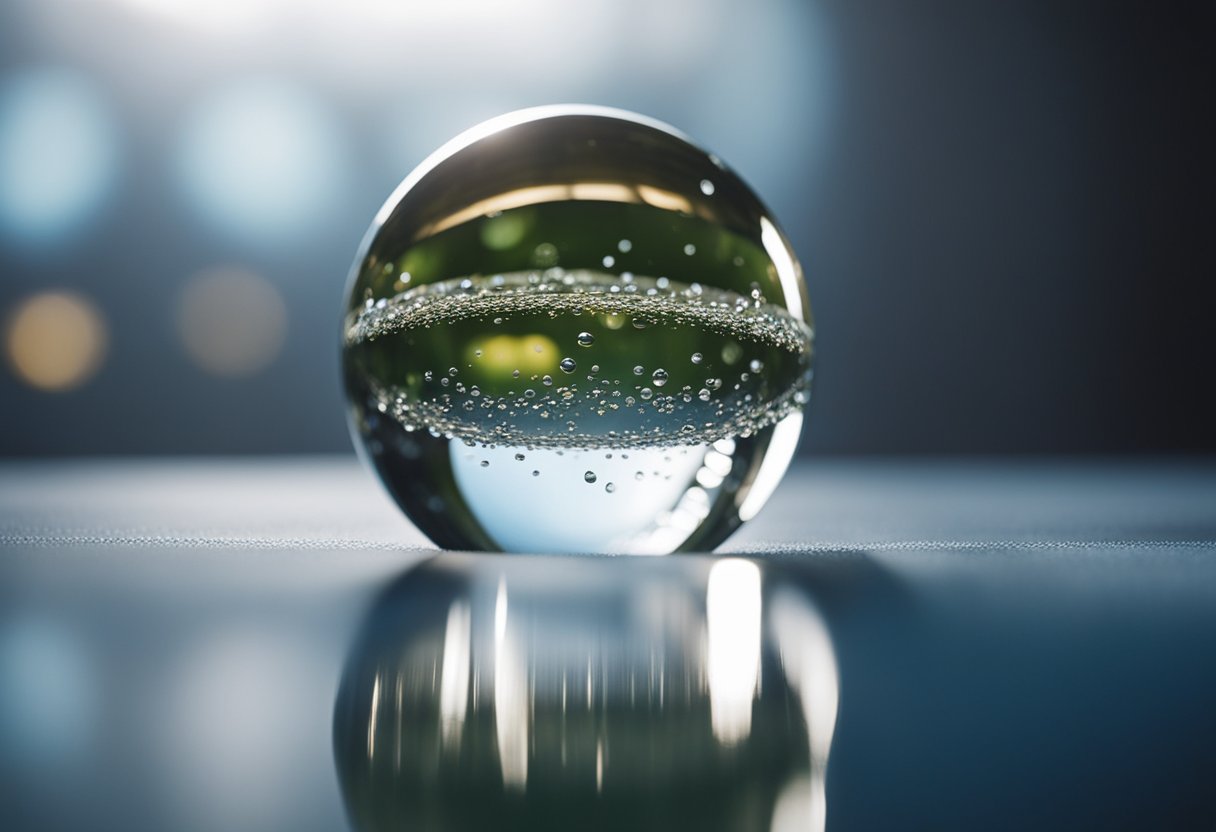
In space, the human body undergoes significant changes due to the absence of Earth’s gravitational pull. Our adaptation, physical health, and perceptual systems are distinctly influenced by zero gravity environments.
When we enter a zero-gravity environment, like on a space station, our bodies begin a complex process of adaptation. Without the downward force we’ve evolved to counteract, our muscles and bones are subjected to a host of changes. NASA’s research into human physiology adaptation to altered gravity environments indicates varied responses, including sex-based differences in how we adapt.
Astronauts in microgravity face multiple health challenges. Muscle atrophy is common, as the muscle fibres receive less stimulation than on Earth. Bone density also decreases, leading to concerns similar to osteoporosis. NASA has been at the forefront of studying these effects, and mitigating strategies have been developed, such as resistance exercises to combat the loss of bone and muscle mass.
Our vestibular system — responsible for our sense of balance and spatial orientation — is deeply affected by microgravity. On Earth, this system has evolved to aid our perception of gravity and movement, but in spaceflight, the lack of gravity means our vestibular system has to adjust to a new norm. This can lead to disorientation and motion sickness until our body acclimatises to the new environment.
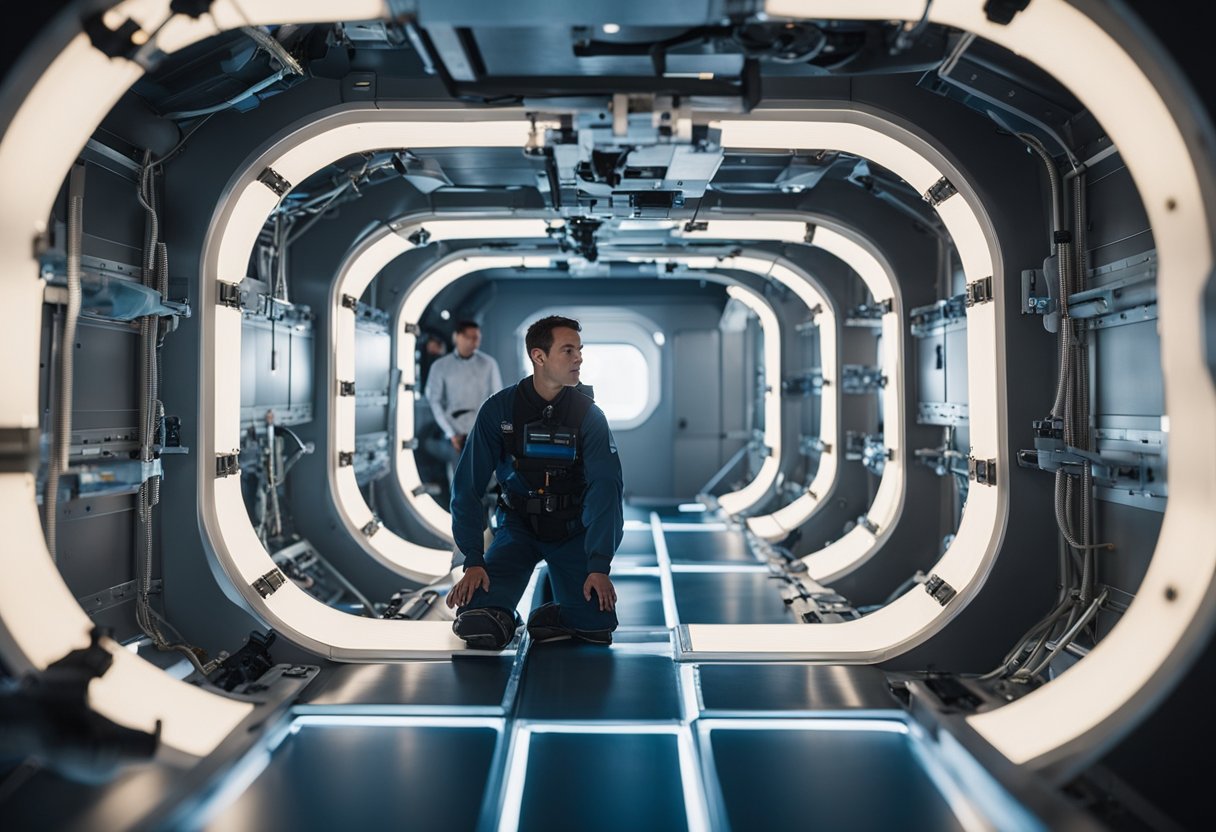
Aboard space stations, astronauts experience a unique set of living conditions defined by zero gravity. As they orbit Earth, they must adapt to a new environment where air, water, food, and even movement differ drastically from that on the planet’s surface.
Our daily routines are punctuated by the careful management of resources and adherence to strict schedules. In zero-gravity conditions, we perform science experiments, conduct maintenance, and engage in exercise to counteract the effects of prolonged weightlessness on our bodies. Meals consist of pre-packaged food that is designed for easy consumption in a microgravity environment, and water is recycled meticulously to ensure a sustainable living condition.
On the International Space Station (ISS), we have established a semblance of home. The air quality and temperature are carefully controlled to maintain a comfortable environment. Sleeping in zero gravity involves the use of sleeping bags tethered to walls or ceilings to prevent drifting. We have access to various amenities such as a kitchenette, wash facilities, and a common area for moments of relaxation.
By embracing these living conditions, we further our understanding of human capabilities in space and prep for a future where space tourism is a reality. Through adapting and improvising, life aboard the ISS continues to evolve, reflecting the harmony between human needs and the science of survival in space.
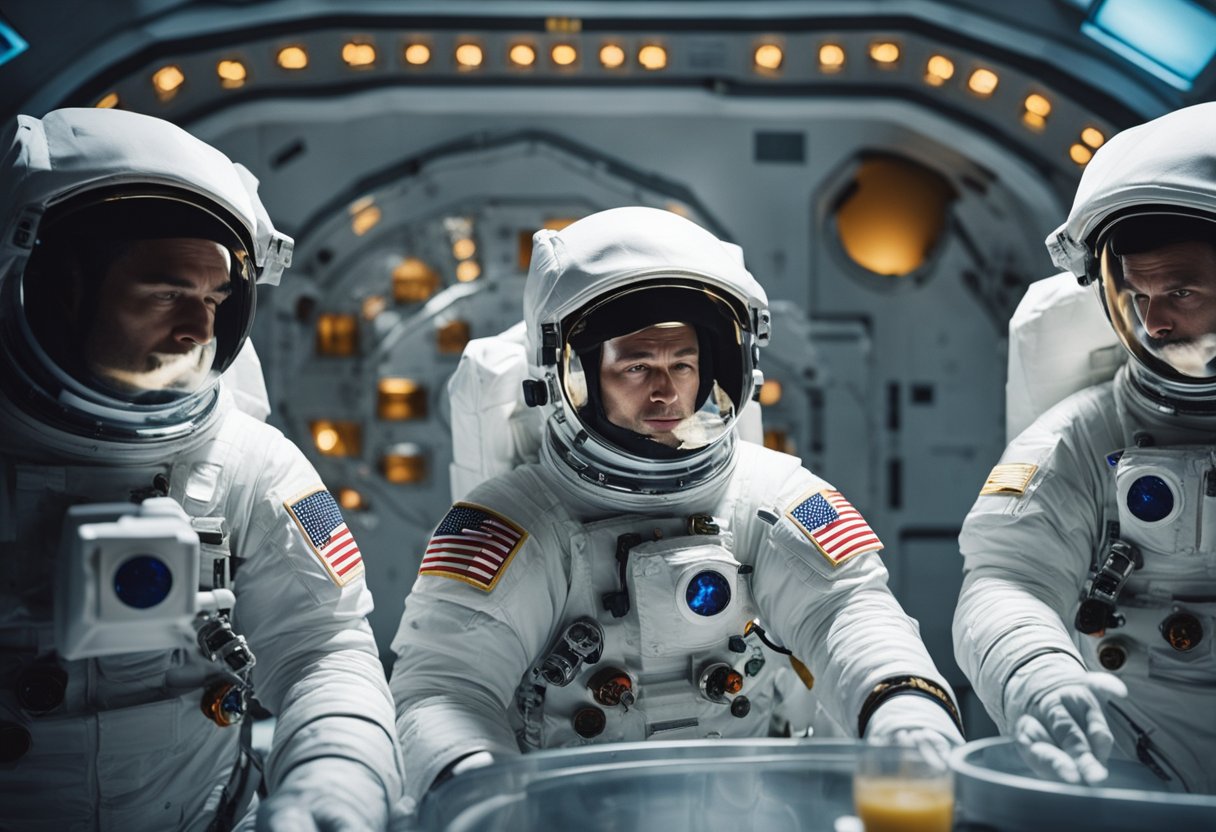
In ensuring the health and performance of astronauts, meticulous attention is given to the provisioning and intake of food in the absence of gravity. The unique environment of space requires careful food preparation and a focus on nutrient retention.
In zero gravity, mealtime aboard a space station is a process that demands innovation. Without the conveniences of Earth’s gravity, packaging and consuming food requires special consideration. Food packets are designed with magnetic, Velcro, or tethered systems to prevent them from floating away.
Liquids come in specially designed containers with straws, and utensils are often magnetised to trays. Astronauts rehydrate freeze-dried meals with water from the station’s system and heat them in zero gravity-compatible ovens. These methods not only prevent food particles from contaminating delicate equipment but also provide astronauts with a semblance of normalcy when eating their meals.
Adequate nutrient intake is essential in zero gravity, where body functions adjust to the new environment. For instance, research highlighted in the article The Zero Gravity Diet from Science News indicates that astronauts tend to consume fewer calories than necessary, leading to careful monitoring of their diets. Moreover, our understanding of space food needs continues to evolve, striving not only to meet traditional nutritional standards but to cater to the unique physiological changes experienced in space travel.
On a space station, food must be rich in nutrients to compensate for the loss of bone density and muscle atrophy. Astronauts receive tailored nutrient-enriched diets, which are continually reviewed as we understand more about the effects of prolonged space travel on human health.
In the unique environment of zero gravity, maintaining personal hygiene requires innovative solutions that address the absence of gravity. We’ve developed methods to keep astronauts healthy and assure sanitation in environments where water and other materials don’t behave as they do on Earth.
Navigating the challenges of water use in the absence of gravity is crucial for hygiene in space. Since water does not flow downwards in zero gravity, astronauts must use specially designed equipment to bathe. For instance, aboard the International Space Station, astronauts rely on a no-rinse body wash and rinseless shampoos.
Towels are used to wipe down the body, capturing the floating water droplets before they can cause any damage to equipment or become a nuisance. To prevent the spread of bacteria and to maintain sanitation, hygiene wipes and sanitizers are used regularly after contact with surfaces.
A key concern in a zero-gravity environment is ensuring that routine personal care tasks do not affect the health of astronauts or the sanitation of the spacecraft. For example, when clipping nails, care must be taken to prevent fragments from drifting away, potentially being inhaled or interfering with equipment.
Astronauts Reveal the Secret of Zero-G Fingernail Clipping gives insight into how these tasks are approached with specific tools and methods. Additionally, astronauts must be prepared to address any health emergencies with a limited set of resources, as getting medical care is not as straightforward as it is on Earth.
Maintaining personal hygiene in zero gravity remains a complex, yet necessary aspect of space travel, both for current astronauts and for the future of space tourism. As we pioneer space tourism through platforms like SpaceVoyageVentures.com, proper hygiene and personal care will be even more essential for ensuring the well-being of all on board.
Space has become an extended laboratory, where the absence of Earth’s gravity allows us to explore phenomena not possible within the confines of our planet. Our endeavours in this extraordinary environment shed light on the challenges and possibilities of life and physical processes in space.
Microgravity, a condition found in outer space, is pivotal for scientific research aboard the International Space Station (ISS). The unique zero gravity environment lets us study a vast array of scientific disciplines free from Earth’s gravitational influence. Researchers utilise this condition to examine biological processes, physical sciences, and human health issues on a cellular level.
Experiments carried out in this setting offer profound insights that could lead to advancements in medicine, engineering, and our understanding of the universe.
Space laboratories on the ISS serve as hubs for this research, equipped with cutting-edge technology to facilitate intricate science experiments. These experiments help scientists unravel the complexities of the universe and foster innovations that can benefit humanity, both in space and on Earth.
We’ve executed numerous notable experiments in zero gravity conditions that have pushed the frontiers of our knowledge. For instance, the studies on the effects of zero gravity on Parkinson’s disease offer hope for millions and their understanding of degenerative nerve disorders. By examining how neurons and other cells behave in space, researchers are developing new strategies to combat these debilitating conditions.
In the realm of physics, creating a microgravity environment on Earth, such as through NASA’s Zero Gravity Research Facility, allows us to perform valuable experiments without the costly trip to space. Through drop towers and parabolic flight, we effectively simulate the free-fall conditions of orbit, which is essential for testing equipment and theories before they’re sent to the ISS.
Moreover, as we prepare for a future that includes space tourism, initiatives like the one documented on SpaceVoyageVentures.com also consider the leisure activities in a zero-gravity context. This involves exploring how human life and entertainment will adapt to the weightlessness of space travel.
Another groundbreaking research stream involves the application of virtual reality in zero gravity. This aids in creating immersive environments that could revolutionise training and operations in space, having been successfully tested under varying gravity conditions.
By focusing our collective expertise on the mysteries of zero gravity and microgravity, we are not only pioneering the frontiers of science but are also laying the groundwork for the future of human space exploration and habitation.
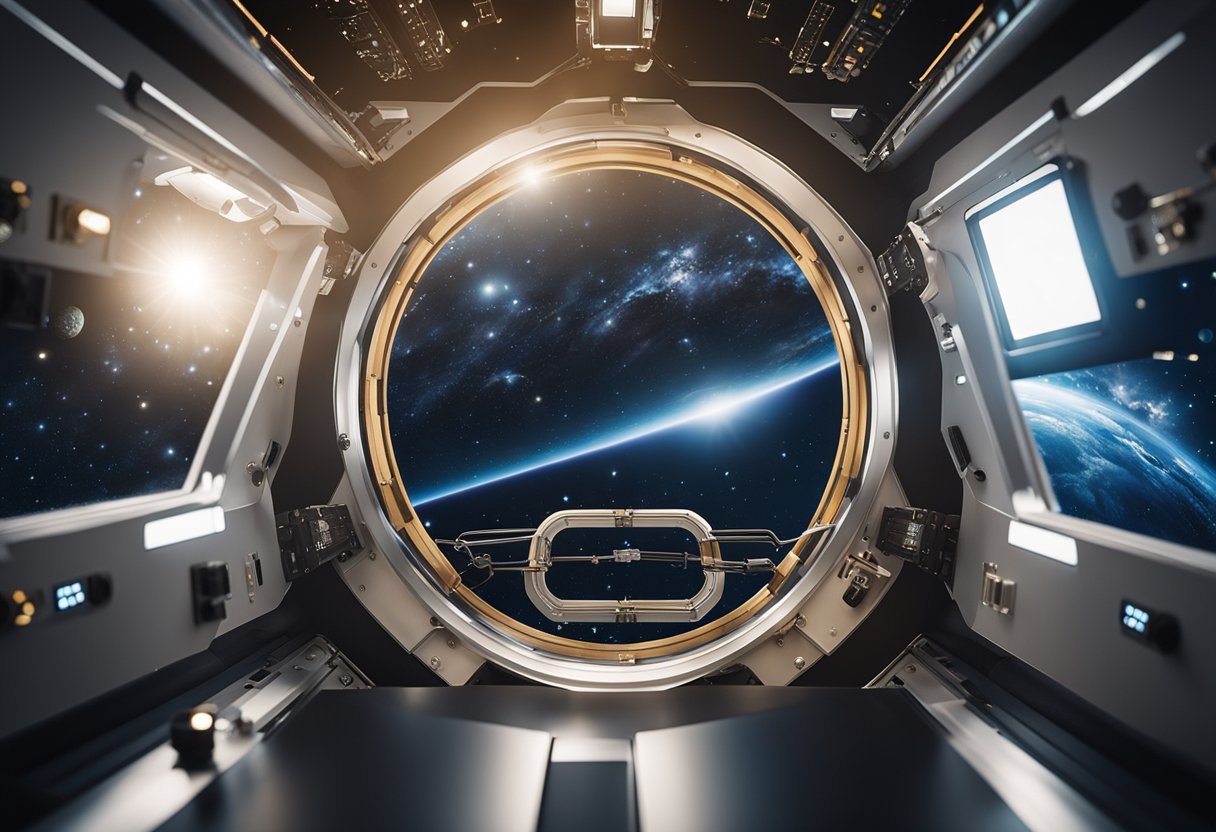
Adapting technology for space use involves a deliberate process of innovation and development. This is crucial for ensuring safety and efficiency in the unique conditions of zero gravity.
In zero gravity, conventional equipment on Earth must undergo significant modifications to function effectively. NASA and other space agencies undertake comprehensive research to customise such technology, ensuring it can operate in a weightless environment.
One example is the development of specialised tools for astronauts that prevent floating away and allow for careful manipulation in tasks. Innovations also include adjustable sleeping quarters and exercise equipment designed to maintain astronaut health in space.
The design and development of spacecraft represent a pinnacle of technological advancement. Our innovation in this area aims to create habitats that can support life for extended periods in orbit. Our spacecraft interiors are crafted to maximise the usable space, with walls being utilised for storage and work areas. Safety features and life support systems are paramount.
As we look to the future, companies like SpaceVoyageVentures.com envision a time when spacecraft not only facilitate astronauts but also open the doors to space tourism for the public.
In the unique environment of space, we must carefully consider the impacts of zero gravity on the body, particularly when it comes to maintaining physical fitness. Microgravity conditions can lead to muscle atrophy and bone loss, so we have devised specialised exercise regimens for astronauts on the space station to ensure their health and well-being.
Muscle Mass: In the absence of gravitational pull, muscles do not have to work as hard to support the body, which can result in muscle atrophy. To counter this, astronauts adhere to daily strength training, which is paramount to preserve muscle mass.
Bone Density: Microgravity also poses a risk to bone density. Astronauts’ bones can lose minerals, with a potential density loss of 1% per month. Weight-bearing exercises are crucial, as they mimic the forces that bones are subject to on Earth, helping to maintain their strength.
Scheduled Workouts: Astronauts on the International Space Station engage in approximately two hours of exercise each day, six days a week, to mitigate the health risks of living in microgravity. These workouts are a mix of cardiovascular and resistance training exercises.
Equipment Used: The exercise apparatus used must account for the lack of gravity; therefore, traditional weights are ineffective. Instead, astronauts use advanced equipment such as the Advanced Resistive Exercise Device (ARED), which simulates lifting weights in zero gravity, and the Combined Operational Load-Bearing External Resistance Treadmill (COLBERT), which allows for running without natural downward force.
By incorporating these exercises, astronauts are better protected against the rigours of space travel, ensuring they return to Earth as healthy as when they left. Our ongoing learning about these health strategies through platforms like SpaceVoyageVentures.com also provides valuable insights for the future of space tourism, where passengers will benefit from this knowledge for their ventures into orbit.
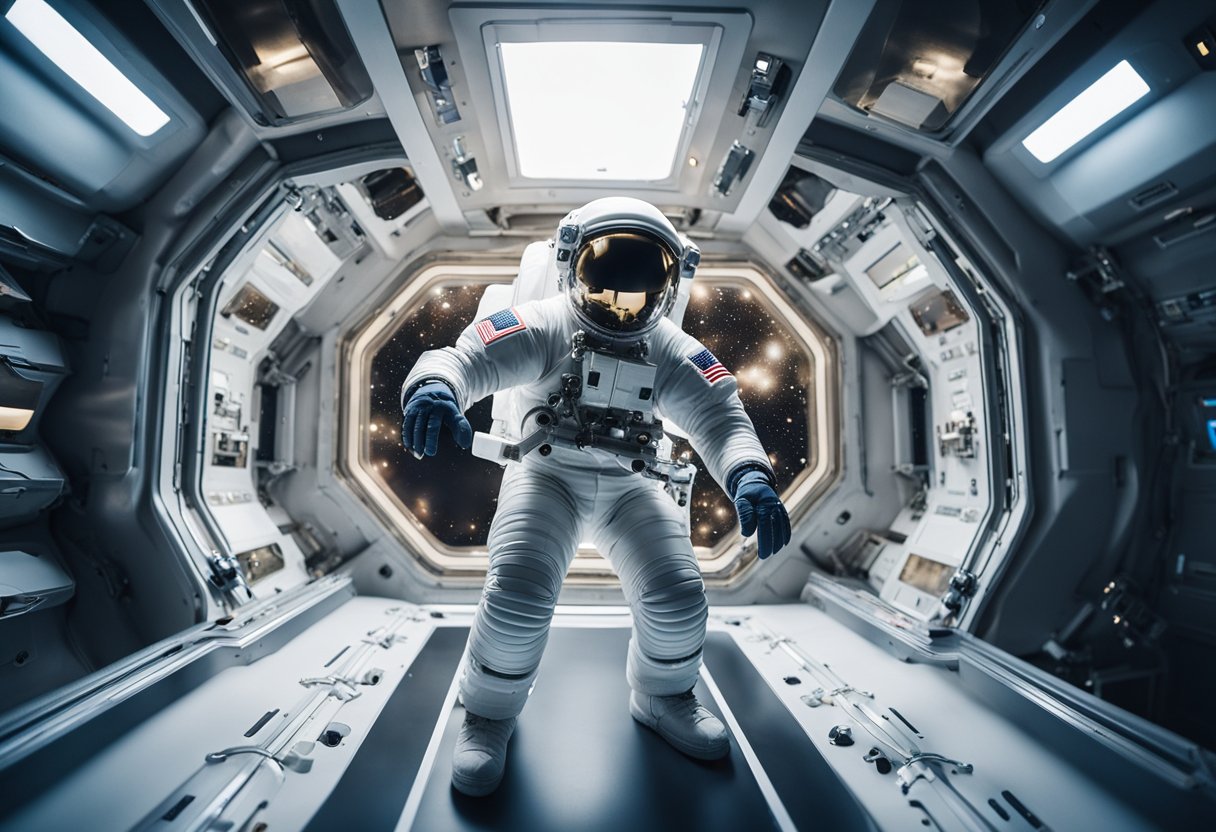
Space living presents unique psychological challenges for astronauts, particularly in zero gravity. We understand that maintaining mental health is just as crucial as physical well-being when it comes to space exploration. living in zero gravity affects not only astronauts’ perception and health but also their psychological state.
In the confined spaces of a spacecraft, astronauts must face longer periods of isolation, which can lead to psychological stress. We recognise that these extreme conditions demand robust coping mechanisms to maintain a healthy mental state during missions.
Strategies include routine communication with mission control and family, as well as designated leisure time to help alleviate feelings of isolation. Our insights align with research that highlights the importance of astronaut training in preparing them for the realities of space living, as seen on Planetary Science.
We implement comprehensive training that prepares astronauts for the psychological challenges of space exploration. This training places a focus on the development of personal coping strategies and team dynamics. Additionally, support systems in place include real-time psychological aid and the advancement of habitat designs that promote a sense of connection to Earth.
It is imperative to support their mental health through every stage of the mission, as detailed by relevant studies on the impact of non-terrestrial gravity on human cognition and socio-affective processing available at Sage Journals.
It is our responsibility to ensure that astronauts receive ongoing support, both in training and during their missions, to foster resilience in the unique environment of space.
Exploring the cosmos presents unique challenges and curiosities, particularly in relation to zero gravity’s impact on life and procedures in space. Here we touch on salient queries about living without Earth’s gravitational pull.
Our bodies undergo various changes in zero gravity, including muscle atrophy, bone density loss, and fluid redistribution. These transformations necessitate special exercises and dietary requirements to mitigate health risks.
Indeed, zero-gravity experiences can be simulated on Earth via special aeroplane manoeuvres known as parabolic flights, which create brief periods of weightlessness.
The duration one can spend in zero gravity without severe health issues varies by individual, but NASA’s protocol typically limits missions to six months to reduce lengthy exposure risks.
Extinguishing fires in zero gravity is complex due to the absence of convection currents that would otherwise remove heat and bring in fresh oxygen, hence, alternate extinguishing methods must be employed.
Costs for an individual seeking a zero-gravity experience range significantly, with suborbital flights running into the hundreds of thousands of pounds, whereas parabolic flights might cost a few thousand.
In zero gravity, smoke forms spherical clouds rather than rising and spreading, as it would under the influence of gravity, posing distinct challenges for detection and filtration systems.